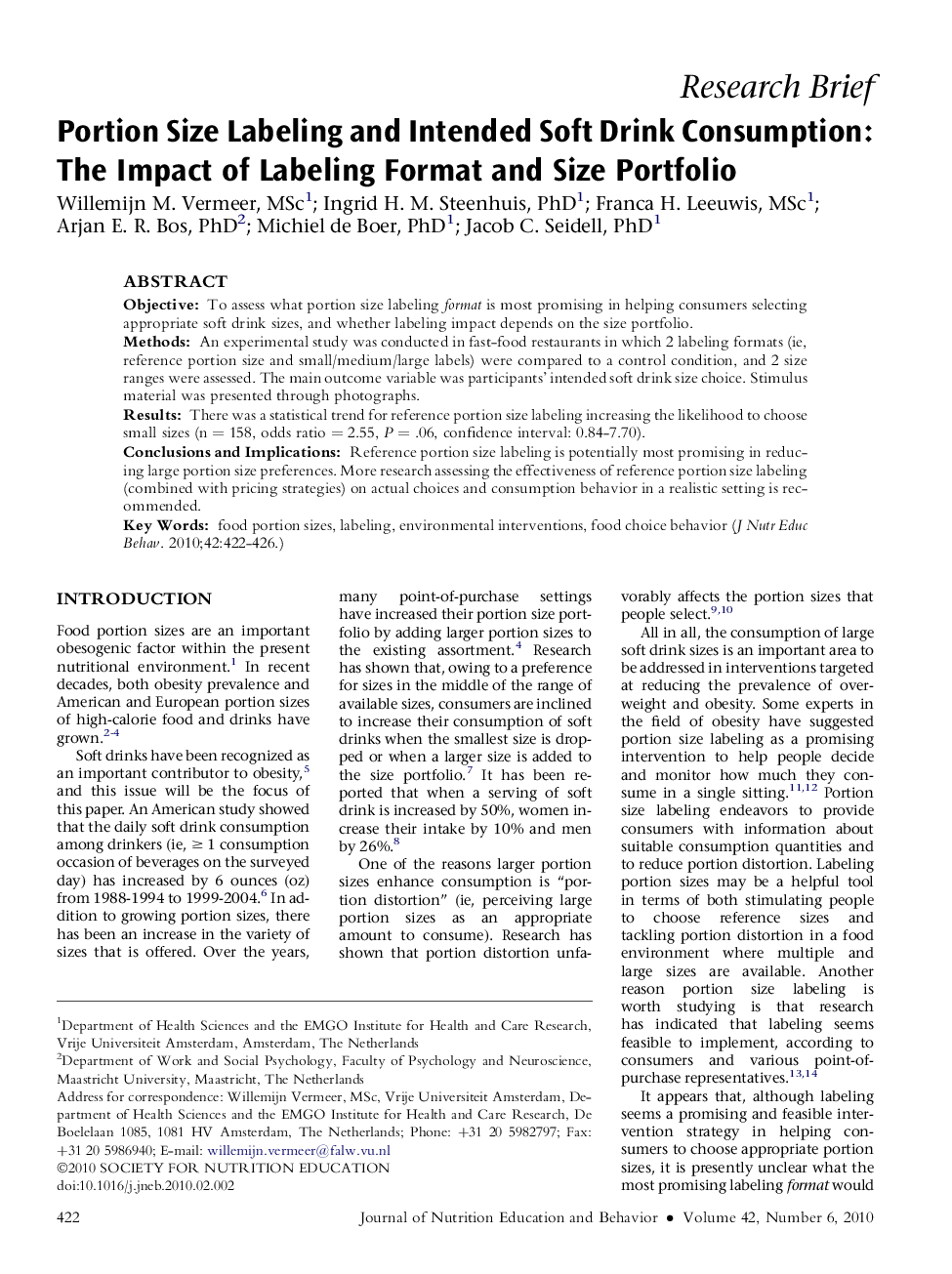| Article ID | Journal | Published Year | Pages | File Type |
|---|---|---|---|---|
| 361979 | Journal of Nutrition Education and Behavior | 2010 | 5 Pages |
ObjectiveTo assess what portion size labeling format is most promising in helping consumers selecting appropriate soft drink sizes, and whether labeling impact depends on the size portfolio.MethodsAn experimental study was conducted in fast-food restaurants in which 2 labeling formats (ie, reference portion size and small/medium/large labels) were compared to a control condition, and 2 size ranges were assessed. The main outcome variable was participants' intended soft drink size choice. Stimulus material was presented through photographs.ResultsThere was a statistical trend for reference portion size labeling increasing the likelihood to choose small sizes (n = 158, odds ratio = 2.55, P = .06, confidence interval: 0.84-7.70).Conclusions and ImplicationsReference portion size labeling is potentially most promising in reducing large portion size preferences. More research assessing the effectiveness of reference portion size labeling (combined with pricing strategies) on actual choices and consumption behavior in a realistic setting is recommended.
